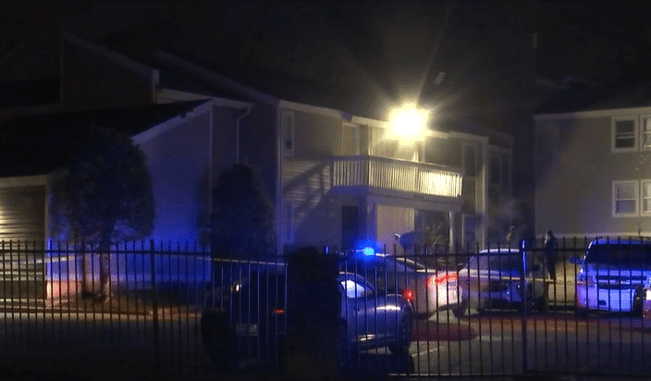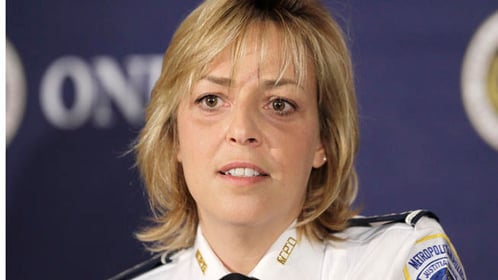By Defensive Daddy. Republished with permission from Growing Up Guns
I don’t think it’s any real revelation to say that the most important skill in defensive shooting is the first shot from the holster. Every story you will read about an armed citizen using their gun in a shooting has one thing in common… They had to get their gun out and shoot! After the first shot rings out, the shooting problem becomes much more complicated. Shooting skills such as shooting on the move, shooting multiple targets, reloading, malfunction work, grappling in a weapons based environment, retention shooting, and a hundred others are all important. However, they all require you to already have the gun in your hand. Taking this into consideration, I spend a significant amount of time (both live and dryfire) practicing what I consider to be the most important skill in shooting. I am currently working on making this faster, more accurate, and more repeatable. I’m going to list my approach but please understand that I’m open for suggestions and ways to improve.
What are the components of a rapid first hit?
- Clearing the cover garment. Ideally you will chose a way that works regardless of clothing choices and time of year. I do a ‘Hackathorn Rip‘ which essentially is grabbing as much jacket/shirt material as I can with my left hand, ripping it as high as I can get it, keeping my left hand high on my pectoral muscle, while establishing a full firing grip on the gun with the right hand. If you go to that link, you’ll see there’s like 12 jillion ways to clear your cover garment. In the interest of not having to remember what season it is, and whether my jacket is unzipped, I decided to just pull all that crap out of the way and get my gun. This might slow me down a bit, but I’m OK with that for the sake of robustness (H/T Gomez). It’s better than leaving some shirt material in the way to foul my draw. I like this method because the left hand is holding the shirt material and waiting for the gun hand to pass through the horizontal line of presentation so it can mate with the right hand.
- Doing a perfect draw-stroke. I have made the conscious decision in my practice to forgo a competition draw stroke in which the gun goes in a straight line from holster to full extension (shortest distance). I have been working with a universal draw-stroke with a built in retention position, as well as the ability to stop along the horizontal line of presentation to shoot, depending on the proximity of the threat. This approach makes the most sense to me analytically, and I’ve experienced the usefulness during force on force evolutions in ECQC and in our training group. I understand that in order to shave significant time off of my draw-stroke, I may have to modify the path of my draw-stroke to a more direct line a la Ron Avery. I haven’t decided if that’s worth it or not.
https://www.youtube.com/watch?v=BMSlCyc-SQQ
- Begin refining the sight picture and prepping the trigger as the gun presses out to full extension. Bring the gun to your eye, not the other way around. I keep my muzzle horizontal under my dominant eye throughout the draw, and the gun never goes lower than it was an instant before. I get the gun into my eye-target line as quickly as possible, and begin touching the trigger as the slide and sights become visible in the lower portion of my peripheral vision. The idea is that as the gun approaches full extension, the sight picture is refined and the trigger has a few pounds of pressure on it. The shot will break just as the gun reaches full extension and you’ll put the shot exactly where it needed to go. An alternative to this method is one taught by Todd Green of www.pistol-training.com where the gun is angled slightly up as the gun is brought from the holster and the front sight is slightly higher than the rear. As you present the gun, the front sight is driven straight towards the target as the rear sight is brought up to meet it. This method is nice when searching with a gun in your hand in an averted muzzle ready position, where you keep the gun angled up while looking past the front sight post as you move. I have given time to both methods, though I’ve never been formally instructed in TLG’s method. Here’s a clip of Gomez discussing some of these points. The relevant video starts at 2:30 or so.
- Seeing what you need to see to make a good shot. There are countless books and videos about this, but in a nutshell it’s about only taking as much time as you need to take to make the shot you need to make. Perfecting this comes with experience, coaching, and lots of practice. It’s the part I struggle with the most. A torso shot at 4 yards and an eyeball shot at 15 yards require different levels of refinement of both sight picture, as well as trigger control.
- Don’t be a spaz. Moving ‘faster’ doesn’t necessarily allow you to make a faster shot. For me, it just makes my sights bounce around a lot more and takes me time to correct them at the last instant. Like Avery says in that video above, trimming the wasted movement seems to go a long way in improving speed.
How do I get better?
Step one, find a reputable instructor who teaches this sort of thing. Learn the correct way to do it, then take it back home and practice practice practice. You should also have a timer. Use either a proper shot timer, or download a shot timer for your smart phone. You’ll want to use it for par times and eventually capture actual times that you can use to carve away wasted movement. Get video of yourself shooting. Looking at yourself is different than just concentrating on how your movement feels. You might see something really stupid that you can’t feel yourself doing.
What drills can I shoot?
I’m using these two live fire drills currently:
Press Six – This drill uses progressively shortening time standards, and increases the round count. It will force you to get hits quickly and test your follow through and grip when making the multiple shot strings. I’ve started at 3 yards, and follow the instructions on the drill for when to move the target further away.
3-two-1 – This drill forces you to ‘see what you need to see’ to make shots on a given target sizes. I’m hoping this one will help me improve breaking shots more quickly when the target is larger, and keep me honest on sights and trigger for lower probability targets.
I’m doing the following in my dry fire practice:
Target is a scaled down torso with aiming spot on the high center chest. Distance varies but I try to simulate between 3 and 15 yards with the reduced size target. Please follow safe dry-fire practices and don’t put a hole through your TV.
20 – perfect and deliberate draws with trigger press. Take your time and do everything how you want to do it.
20 – 3/4 speed draws with trigger press.
15 – full speed draws with trigger press. Occasionally I’ll use a par timer and set it for 1.5 to 2 seconds. I am concentrating on finding the front sight and having the shot break as I reach full extension. This requires some honesty with myself and occasionally a video camera. Video doesn’t lie.
5- perfect and deliberate draws with trigger press. I finish with a perfect mechanics.
This is a great resource for dry fire. It’s pretty old at this point, but it keeps dry fire interesting.
Any tips you can turn me onto, I’d appreciate it. I’m just trying to get better like everyone else!!!
Protect the Brood,
Defensive Daddy.












![[CCW IN ACTION] Coming Home To Find Robbers In Your House? Everyday Is A Great Day To Carry…](https://imagedelivery.net/sbm_lYeJbALkepJgtmRD5w/concealednation.org/2015/10/Baker-Street-shooting1.jpg/w=728,h=381)

